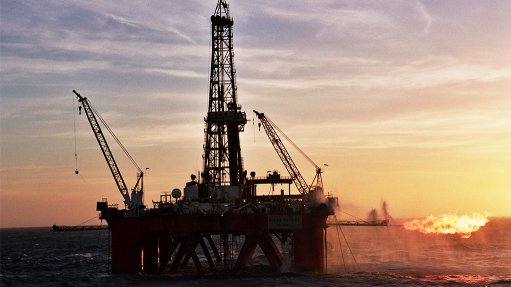
GAS BOOST The Department of Energy’s request for information may spur growth in the gas sector
A request for information (RFI) issued by the Department of Energy (DoE) in May for the development of its gas-to-power programme is expected to be a much needed catalyst for growth in South Africa’s natural-gas sector, avers Sandton-based law firm Baker & McKenzie.
Baker & McKenzie Johannesburg projects and energy partner Kieran Whyte says gas, in general, has been underdeveloped as a resource for electricity in South Africa, owing to years of an overreliance on coal, which is currently used by State-owned power utility Eskom as the primary fuel for its baseload generation.
He believes now is an opportune time for South Africa to begin developing its gas infrastructure and gas economy, which is likely to include deep-sea ports and gas conveyance infrastructure to import liquid natural gas (LNG) from LNG carrier ships.
Other ways of importing natural gas include piping it from neighbouring countries that have existing pipelines, and potentially upgrading and expanding petroleum products company Sasol’s existing gas pipeline from Mozambique. LNG can also be shipped around the world and purchsed on the open market.
Whyte says vast gas reserves have been identified off the coast of Mozambique, in the Rovuma basin, which could assist South African independent power producers (IPPs) with a steady supply of gas. Gas can be used as the fuel in open-cycle gas-turbine (OCGT) power generating plants.
Eskom has two OCGT plants, Ankerlig and Gourikwa, both in the Western Cape. However, instead of using gas, Eskom’s OCGTs are currently using diesel, which is more expensive and has to be transported to the plants by tanker trucks.
Whyte points out, however, that if gas were used instead of diesel, it could be piped to the plants, thereby eliminating the need for tanker truck fleets to make frequent deliveries and ultimately driving costs down. Another advantage is that gas is burnt with greater efficiency in an OCGT, compared with burning diesel. Further, owing to gas’s cleaner burning qualities, carbon emissions will be lower.
Moreover, Eskom’s OCGT plants have been used more often during the past year, further cementing the need for thermal plants to boost South Africa’s electricity capacity to meet national demand. Eskom’s OCGT plants were designed to meet only peak electrical demand for a couple of hours.
Meanwhile, other African countries that could potentially export LNG to South Africa include Nigeria, Equatorial Guinea, Congo, Gabon, Ghana, Côte d'Ivoire, Cameroon, Uganda and Zambia.
A major offtaker of gas in South Africa would be the electricity generation sector, specifically new IPPs. In this regard, the DoE is also considering the procurement of about 3 126 MW from IPPs that are willing to invest in gas-fired power stations in South Africa.
However, as LNG is traded in US dollars, this could result in the dollarisation of the South African energy chain.
“Being an energy developer would require investigation into the exposure of energy to the dollar,” he says, adding that IPPs would probably have to adopt a robust hedging strategy in respect of their projects, as the projects are likely to be undertaken in terms of dollar-based expenditure, with the project generating revenue in rands.
Proposed Solutions
The RFI proposes to create a significant anchor gas demand through the development of projects in the gas-to-power programme. This will provide a market for the supply of gas, and long-term gas investment demand for future indigenous gas supply.
The DoE is also investigating the possibility of using the gas-to-power programme to supply a limited amount of gas for use by industrial and other consumers.
Further, Whyte notes that government is also finalising the Gas Utilisation Master Plan (Gump), which will establish the roadmap for the development of the gas sector in South Africa.
He adds that Gump is being debated by government officials, and has not yet been released. However, “once Gump is better understood by government, it will provide a guide upon which the legislative framework can be assessed to see where changes can be made to the Gas Act”.
Whyte says imported LNG provides a “great opportunity” to incorporate localisation and there will be infrastructure development, which bodes well for investment and employment opportunities, as well as building “quite a lot of skill sets” in the country.
Gas Types
Baker & McKenzie propose that South Africa consider developing five types of indigenous gas projects – underground coal gasification, coalbed methane, piped field gas, the hydrocarbon feedstock gasification projects, and subsequent to confirmation of adequate reserves, shale gas.
However, in the absence of available natural gas in South Africa, and to ensure new capacity delivery within the timeframes and objectives of a medium-term risk mitigation project as proposed by the DoE’s RFI, it will be necessary to import other forms of gas. These include LNG, compressed natural gas and liquid petroleum gas.